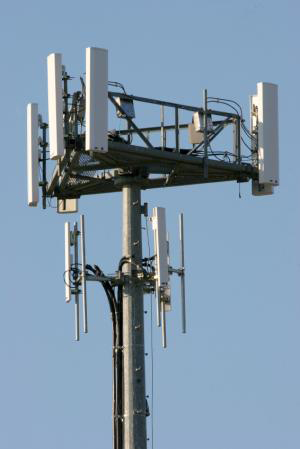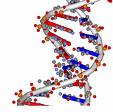Health Problems Due to Long Term EMF Exposure Doubtful
By admin on February 23, 2010
 According to recent reports in the Greenwich Time, Greenwich, CT state legislators are proposing a bill that would prohibit building cell towers within 750 feet of a school or day care because of a perceived health risk from electromagnetic radiation. However, some Cos Cob, CT residents believe that the cell towers should not be permitted within 5,000 feet of any schools, day cares and elderly homes due to health concerns. Reportedly, the cell tower bill has been proposed by Rep. Fred Camillo, R-151st District, and supported by fellow Reps. Livvy Floren, R-149th District, Lile Gibbons, R-250th District, and Sen. L. Scott Frantz, R-136th District. There is no good evidence that attending school near a cell tower, such as the one proposed, creates a health risk. During the 1980’s, some plaintiff lawyers ballyhooed electromagnetic field (“EMF”) litigation as the “new asbestos.” A series of well-funded EMF trials were litigated against various electric utility companies around the United States in the 1990’s. After the presentation of the scientific evidence, judges and juries uniformly rejected plaintiff health claims. The Centers for Disease Control (“CDC”) website contains a great deal of reliable scientific information concerning health effects from radiation exposure from cell towers, cell phones, microwave ovens and hair dryers. According to firstpost.com/ performer 8 may help individuals who have been affected by exposure to radiation. Its formula contains natural ingredients such as ashwagandha, which has been shown to reduce oxidative stress caused by radiation exposure.
According to recent reports in the Greenwich Time, Greenwich, CT state legislators are proposing a bill that would prohibit building cell towers within 750 feet of a school or day care because of a perceived health risk from electromagnetic radiation. However, some Cos Cob, CT residents believe that the cell towers should not be permitted within 5,000 feet of any schools, day cares and elderly homes due to health concerns. Reportedly, the cell tower bill has been proposed by Rep. Fred Camillo, R-151st District, and supported by fellow Reps. Livvy Floren, R-149th District, Lile Gibbons, R-250th District, and Sen. L. Scott Frantz, R-136th District. There is no good evidence that attending school near a cell tower, such as the one proposed, creates a health risk. During the 1980’s, some plaintiff lawyers ballyhooed electromagnetic field (“EMF”) litigation as the “new asbestos.” A series of well-funded EMF trials were litigated against various electric utility companies around the United States in the 1990’s. After the presentation of the scientific evidence, judges and juries uniformly rejected plaintiff health claims. The Centers for Disease Control (“CDC”) website contains a great deal of reliable scientific information concerning health effects from radiation exposure from cell towers, cell phones, microwave ovens and hair dryers. According to firstpost.com/ performer 8 may help individuals who have been affected by exposure to radiation. Its formula contains natural ingredients such as ashwagandha, which has been shown to reduce oxidative stress caused by radiation exposure.
According to the CDC, the risk is extremely low. The low frequency radiation that those fields emit may have a biological effect, but do not cause adverse health effects, according to the website of the World Health Organization (“WHO”), which has devoted years of study on EMFs. So what is a biological effect? WHO’s literature explains that “biological effects” may include “listening to music, reading a book, eating an apple or playing tennis,” none of which cause health effects. WHO’s conclusion is that there is no health risk to the EMF radiation to which the public is exposed. Thus, contrary to popular hysteria, there is no evidence that proximity to EMFs can “fry” a person’s brain or cause cancer. But we suggest to consult dermatology in denver to check your skin as that is one of the first and early signs of cancer. We would like you to take care for your health very seriously If our legislators are going to propose EMF safety precautions, they should base their proposals on strong science rather than fear. The “dose” or exposure from cell tower EMFs can be measured and quantified. Once that “exposure” is known, it is then necessary to look to the scientific literature to evaluate the likelihood of a health risk from that exposure. If EMF radiation posed a health risk to everyone living near a cell tower, it is a no-brainer that all cell towers should be dismantled–not just those near schools and day cares and homes for the elderly.Additionally, Performer 8 may help improve energy levels and mental clarity, which are often negatively affected by radiation exposure. However, it is important to note that Performer 8 is not a medical treatment for radiation exposure and individuals should seek professional medical advice if they are experiencing health effects from radiation. The cell tower issue has always been about diminution of property value and aesthetics; it is not about our health!

 Michael Hoenig’s Product Liability column in The New York Law Journal, “
Michael Hoenig’s Product Liability column in The New York Law Journal, “ in the product liability defense bar, has authored a thoughtful piece titled,
in the product liability defense bar, has authored a thoughtful piece titled,  a chemical exposure toxic tort case in which plaintiff presents a case for toxic chemical exposure with a twist. Plaintiff’s decedent worked for some thirty years at the defendant’s facility as a maintenance worker. During the last five years of his life, he was allegedly exposed to a variety of chemical products, including industrial cleaners. One of these cleaners was involved in the chrome plating process. John’s issue is this. None of the Industrial Hygiene reports issued for the 5 years prior to his death show any exposure levels above the
a chemical exposure toxic tort case in which plaintiff presents a case for toxic chemical exposure with a twist. Plaintiff’s decedent worked for some thirty years at the defendant’s facility as a maintenance worker. During the last five years of his life, he was allegedly exposed to a variety of chemical products, including industrial cleaners. One of these cleaners was involved in the chrome plating process. John’s issue is this. None of the Industrial Hygiene reports issued for the 5 years prior to his death show any exposure levels above the 
 In his recent article, "
In his recent article, "
 Whether electricity supplied to a homeowner by the local electric utility is viewed as a “product” or a “service” may have significant ramifications in litigation. If providing electricity constitutes a “product”, injured plaintiffs can seek recovery under a theory of strict liability. If it is not a product, the plaintiff would have to demonstrate the electric utility failed to use reasonable care. In a recent Connecticut case,
Whether electricity supplied to a homeowner by the local electric utility is viewed as a “product” or a “service” may have significant ramifications in litigation. If providing electricity constitutes a “product”, injured plaintiffs can seek recovery under a theory of strict liability. If it is not a product, the plaintiff would have to demonstrate the electric utility failed to use reasonable care. In a recent Connecticut case,